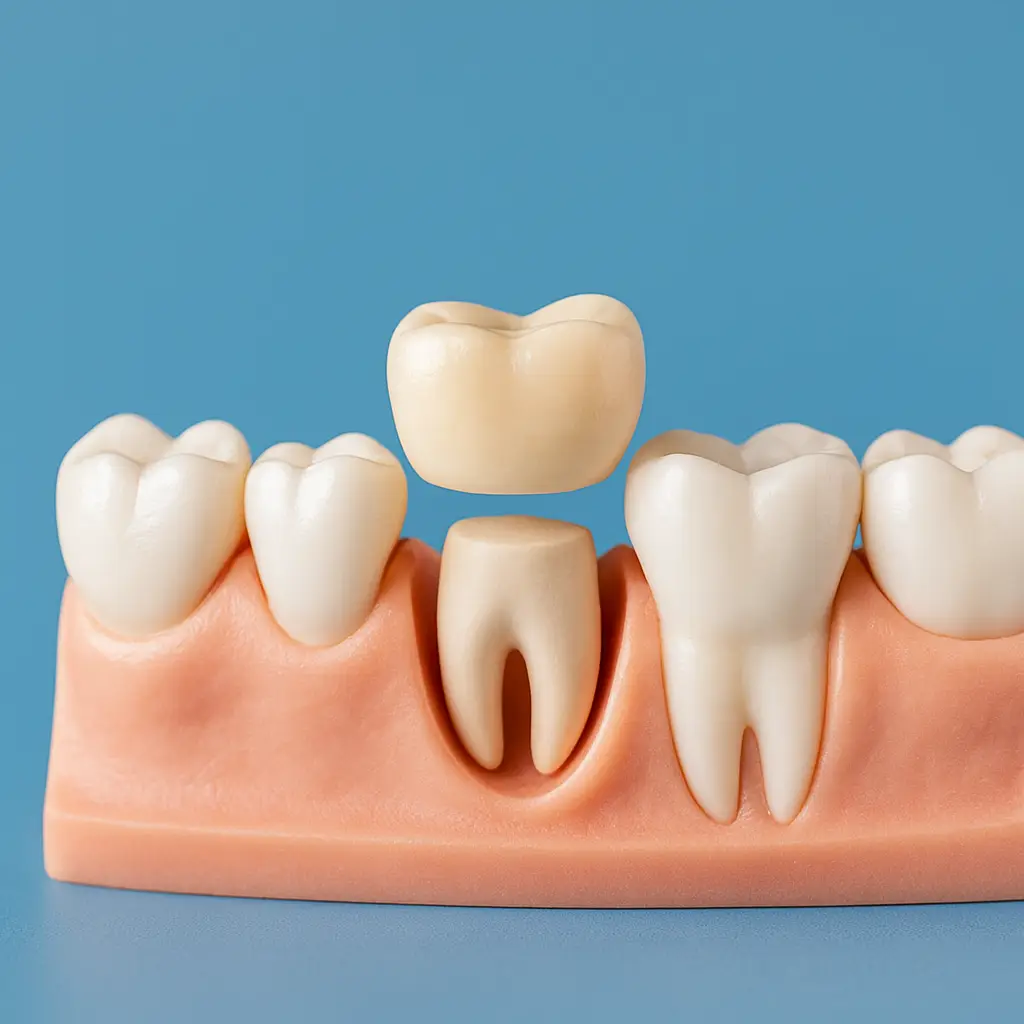Crowns
What Is a Dental Crown?
When a tooth is badly damaged or weakened by decay, a filling might not be enough to restore its strength. In these situations, a dental crown can be the best way to protect and preserve the tooth.
A crown—sometimes called a cap—fits over the existing tooth to hold it together, prevent further damage, and restore its shape and function.

Crowns are also used to cover dental implants, improve the look of discolored or misshapen teeth, and strengthen cracked or worn teeth.
Once in place, your crown functions just like a natural tooth. Keep it strong by brushing, flossing, and visiting your dentist regularly. With proper care, crowns can last for many years.
Procedure Overview
Procedure Overview Crowns
Metal Crowns
Made from gold or other alloys, metal crowns are the strongest and most durable option. They cause minimal wear on surrounding teeth, making them ideal for molars. However, their metallic color stands out, so they’re less suitable for visible areas.
Ceramic Crowns
Crafted from porcelain, ceramic crowns look the most like natural teeth and are often used for front teeth. While they offer excellent aesthetics, they are more fragile and can chip under pressure or cause wear to opposing teeth.
Porcelain-Fused-to-Metal (PFM) Crowns
PFM crowns blend strength and aesthetics by combining a metal base with a porcelain exterior. They’re durable and natural-looking, but the metal edge can sometimes show near the gumline. The porcelain layer is also prone to chipping over time.
Zirconia Crowns
Zirconia is a strong, tooth-colored material that offers a solid middle ground. It’s more aesthetic than metal and more durable than porcelain, but not quite as natural-looking as all-ceramic crowns. It may also be rougher on opposing teeth.
The Crown Procedure
The process involves two visits:
Visit 1: Tooth Prep and Temporary Crown
-
The dentist removes any decay and prepares the tooth by trimming it down.
-
Impressions are taken using dental putty, and a temporary crown is placed to protect the tooth.
-
Your mold is sent to a lab to create a custom crown that matches your natural teeth.
Visit 2: Permanent Crown Placement
-
The temporary crown is removed and replaced with the permanent one.
-
The dentist checks the fit and makes adjustments as needed.
-
Once everything feels right, the crown is bonded into place.
Crowns function just like natural teeth. With good brushing, flossing, and regular dental checkups, your crown can last a decade or more—sometimes even up to 50 years.